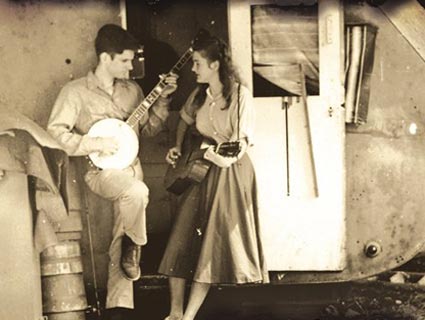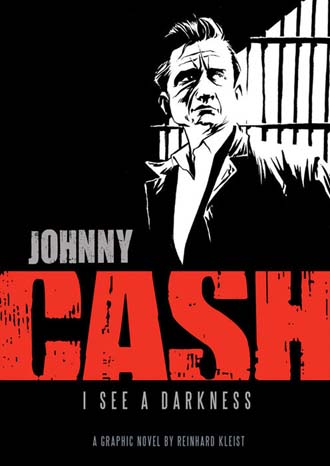On Christmas Day, 1895, a local pimp named “Stack” Lee Shelton walked into a St. Louis bar wearing pointed shoes, a box-back coat, and his soon-to-be infamous milk-white John B. Stetson hat. Stack joined his friend Billy Lyons for a drink. Their conversation settled on politics, and soon it grew hostile: Lyons was a levee hand and, like his brother-in-law—one of the richest black men in St. Louis at the time—a supporter of the Republican party. Stack had aligned himself with the local black Democrats. The details of their argument aren’t known, but at some point Lyons snatched the Stetson off Stack’s head. Stack demanded it back, and when Lyons refused, shot him dead.
The story of Stack-O-Lee—or Stack O’Lee or Stagger Lee or Stack A Lee depending on who’s singing—became the popular subject of murder ballads and blues songs in the early 20th century. In the liner notes of a new collection, People Take Warning: Murder Ballads and Disaster Songs, 1913-1938, Tom Waits argues that most murder ballads are “just a cut above graffiti…the oral tabloids of the day.” They were written by street singers to capitalize on the pulp appeal of violent local crimes. Certainly the ballad of Stack-O-Lee seems to have begun this way. But unlike most ballads of its time, Stack-O-Lee’s has survived and flourished through the years. What accounts for the story’s longevity?
When Shelton was released from prison in 1909, Stack-O-Lee was already being sung throughout the southern states. The earliest records of it come from Kansas City in 1897. Presumably it traveled there from St. Louis in the three years since Lyon’s murder. There is evidence that by 1900, the song had made its way to Colorado, but it wasn’t until 1903 that the first written transcript of the lyrics surfaced in Memphis—at which point it began to crop up everywhere. By 1911, it had made its way into the Journal of American Folklore, in an article by early folklorist John Lomax.
Shelton undoubtedly bolstered the song’s popularity when, months after his release from prison for murdering Lyons, he killed another man during a robbery. By the 1920s, the song appears to have been part of nearly every delta musician’s repertoire—everyone from Mississippi John Hurt to Furry Lewis was playing it. It was also picked up by singers like Duke Ellington and Cab Calloway. Woodie Guthrie began singing the song in the 1930s as he traveled around the country supporting the struggling labor movement. A bootleg rehearsal video reveals that Elvis even sang it. And in 1993, Bob Dylan rewrote a 1927 arrangement written and recorded by Frank Hutchison, the first white blues recording artist. In all, under various titles, Stack-O-Lee has been recorded by more than 400 artists, an average of one new version every 10 weeks for the past 85 years. By some estimates, one 1927 recording of the song is considered the fifth most valuable record in the world—worth about $30,000.
The day Shelton shot Lyons, there were four similar murders in St Louis. For all we know, they may have all had songs written about them. But only Shelton survived. He became a sort of folk hero, renowned for his badness and his disregard for the law. In his 2003 book, Stagolee Shot Billy, Cecil Brown makes sense of Stack’s fame this way:
Stagolee came to personify the collective feeling of blacks at the bottom of society, and it was in this sense that Stagolee became a symbol of the black community…. According to Sterling Stucky this process has been going on since slavery: ‘slaves were able to fashion a lifestyle and set of values—an ethos—which prevented them from being imprisoned altogether by the definitions which the larger society tried to impose. This ethos was an amalgam of Africanisms and New World elements which helped slaves, in Guy Johnson’s words, ‘feel their way along the course of American slavery, enabling them to endure.”… As an expression of a new ethos, Stagolee enabled blacks to use it as a character for survival.
Stack-O-Lee became a trickster hero in southern black society. The trickster figure crops up in the folk stories of just about every culture—the coyote in Native American stories or Hermes in Greek mythology. Tricksters are traditionally understood to be the consequence of polytheistic belief systems. Simply put, when you have more than one god, each with its own personality, contradictions arise in how you should best act and what you should believe. Tricksters exploit these contradictions and in doing so illuminate their absurdity. Stack-O-Lee was just that to black Americans living in the Jim Crow south. He negotiated the strange space they occupied between slavary and freedom. He broke society’s rules unapologetically. The tragedy of his actions—he kills a man for taking his hat (it was his crown, Bob Dylan once wrote)—only serve to illustrate the injustices of southern society. For all the myth surrounding him, there is something very rational about Stack-O-Lee’s character: Why follow some of societies rules when so many others work against you?
There is an alternative theory to the origins of Stack-O-Lee. It holds that the song has nothing to do with the murder of Billy Lyons. Rather, the name originated from a Mississippi river boat named the “Stacker Lee,” and blues musicians playing on the docks may have simply taken the name off its side. According to this theory, the connection to the murder of Billy Lyons was made only later. And indeed, the name of the murdered man changes in different versions of the song and there is no known version in which the Stetson hat appears before Mississippi John Hurt’s 1928 recording. As historians are reasonably certain that both the boat and the man really existed, the true origins of Stack-O-Lee may never be known. Of course, the song has little more to do with Stetson hat than it does a boat.












